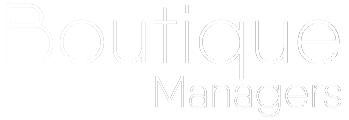
The first two weeks of Q2 have been erratic and very volatile for all asset classes as markets try to price in the economic damage of the Trump administration’s ‘Trade War’. The US President has decided that he wants to reverse outsourcing, bring back the US’s manufacturing base, and balance the budget, and achieve this through resetting tariffs with the rest of the world.
However, the US bond market wasn’t buying it and fell sharply at the long end of the curve, leading to a series of U-turns and climb-downs which have restored a degree of calmness to markets this week (April 14th). The 90-day truce offered by the Trump administration is good news, as it signals that there is a threshold that is too painful to go beyond and has lent a floor to risk assets. However, it doesn’t suggest an end to the tariff saga and some damage will already have been done.
The reaction of the US treasury market and currency, traditional safe-haven assets, also suggest an unwind of appetite for both, with the US dollar giving up almost 10% since the start of the year. Having provided good diversification benefits for risk-off moves for most of 2025, the rise in yields can be attributed to hedge funds unwinding positions as well as concerns about future domestic and foreign demand, unsettled by Trump’s erratic policies.
The rapid pace of developments and ensuing about-turns means that it is too soon yet to determine the precise economic impact of tariffs. However, it is reasonable to believe that the risks are now skewed towards a deceleration in US growth, which will have an impact on corporate earnings. Whilst global share prices have already adjusted downwards since their peak on February 18th (in some cases by >25%, and more for specific sectors), valuations are based on historic earnings and these are likely to come under scrutiny and pressure during the next few quarters.
Currently, the Federal Reserve (Fed) seems to be more worried about the inflationary consequences of tariffs than those related to growth. The size of the tariff numbers being discussed is material and will cloud the Fed’s path to cutting rates until the final levels are set. That said, if there were to be a significant slowdown in the US, we would expect the Fed to cut rates aggressively as recessions are deflationary by nature.
What is becoming clearer as 2025 proceeds is that Europe and other non-US markets stand to win market share from the US in asset allocations to both government bonds and other risk assets, including equities. S&P actually upgraded Italy to BBB+ status during the course of last week, despite the volatility in other safe-haven assets. Investors have been rewarded for holding non-US assets and currencies during the past three months and we expect this benefit not to have gone unnoticed.
In addition, historically, when the S&P 500 top ten accounts for > 25% of the index, the equal weight (average) share has outperformed the market cap version by c. 6% per annum in the following five years. The top ten accounted for > 38% at its peak in late 2024 and sector leadership in the US has broadened in favour the wider market so far this year. (Source: FactSet)
Within our Global Equity strategy and fund, we have been under-weight the US equity market for several quarters (currently 55% US exposure, 43% non-US and 2% cash). The majority of the non-US exposure is in the EU, Switzerland and the UK, where we have benefitted from both relatively good equity performance as well as currency appreciation.
We recently trimmed several of the more defensive US stocks (staples, insurance & diversified financials) to take advantage of the sharp fall in Nvidia and initiated a 3% position at $87. Elsewhere, we have added to positions in KLA Corp (semiconductor design & production), UBS and Novo Nordisk, the latter following the recent sharp corrections.
The fund’s largest position remains Berkshire Hathaway which has outperformed the S&P 500 by c. 20% year to date. Warren Buffett’s decision to boost liquidity in Berkshire’s asset base over the past twelve months has proved once again to be very timely, whilst his increased exposure to Japanese trading companies and the yen have also been outstanding contributors to returns during this period. We look forward to hearing if the recent sell-off has brought any US target investments on to his radar.
The best performers in the portfolio YTD include Rolls Royce (+32% in USD terms), Veolia Environnement (+22%) and Vinci SA (+28%). The latter two have benefitted from stake building by Spanish fund CriteriaCaixa (Veolia – 5% shareholding) whilst Vinci stands to benefit from greater EU infrastructure investment as well as better than expected performance from its airport and toll road assets. All three fit our thesis for enhanced returns from select, non-US stocks in the coming cycle.
For further details on the Martello Global Equity Fund, please visit: https://martello-am.com/global-equity-fund/
Disclaimer: The views, thoughts and opinions expressed within the article are those of the author. Information in this article does not constitute investment advice or an offer or an invitation to buy or sell any product or security or to make a bank deposit. Any reference to past performance is not necessarily a guide to the future. The value of investments may go down as well as up and may be adversely affected by currency fluctuations. Opinions constitute views as at the date of publication and are subject to change.
Capital International (Jersey) Limited is regulated by the Jersey Financial Services Commission and is authorised as a Financial Services Provider by the South African Financial Sector Conduct Authority (FSP No. 51164).



